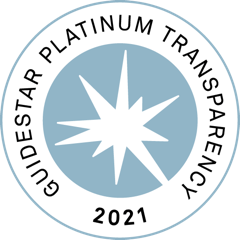Beyond Standard Therapy: Novel Drug Classes Showing Promise for Relapsed Myeloma

For patients with relapsed or refractory multiple myeloma, navigating treatment options can be challenging, especially after standard therapies stop working.
However, promising new treatments with entirely different mechanisms of action are currently in clinical trials. Two innovative drug classes—BCL-2 inhibitors and p300/CBP inhibitors—are showing encouraging results and could potentially offer new hope for patients in the future.
BCL-2 Inhibition: How Lisaftoclax Forces Myeloma Cell Death
Presented in the abstract titled "Lisaftoclax (APG-2575) Combined with Novel Therapeutic Regimens in Patients with Relapsed or Refractory Multiple Myeloma or Immunoglobulin Light‑Chain (AL) Amyloidosis". Lisaftoclax is a novel drug designed to block a protein called BCL-2, which helps cancer cells survive.
By inhibiting BCL-2, lisaftoclax forces cancer cells to undergo apoptosis (programmed cell death). This mechanism is different from most existing myeloma treatments, making lisaftoclax a potential breakthrough for patients whose disease no longer responds to standard therapies.
Note: Venetoclax is another BCL-2 inhibitor. While it is commonly used to treat 11;14 translocation myeloma patients, the FDA has not officially approved it for myeloma treatment.
Clinical Trial Highlights
-
52 patients currently enrolled in the trial, 10 AL Amyloidosis, 42 relapsed/refractory myeloma
-
Combination Treatments: Lisaftoclax is being tested in combination with existing drugs like pomalidomide, daratumumab, lenalidomide, and dexamethasone.
-
Promising Results: In the clinical trial, lisaftoclax combined with pomalidomide and dexamethasone (Arm A) led to:
-
61.3% overall response rate (ORR) among patients with relapsed/refractory multiple myeloma.
-
In the group with AL amyloidosis, the response was even more promising—85.7% of patients responded to the combination therapy. Additionally, two of the ten amyloidosis patients showed significant cardiac improvement, highlighting the therapy's potential in managing organ damage associated with AL amyloidosis.
-
Manageable Side Effects: Common side effects included low white blood cells (neutropenia), nausea, and diarrhea. Serious side effects were rare and manageable.
These findings suggest that lisaftoclax, with its unique BCL-2 targeting approach, could become an important new option for patients with heavily pre-treated or resistant myeloma.
This is an ongoing trial. To learn more about possible enrollment, click here: Lisaftoclax Trial
p300/CBP Inhibition: Inobrodib's Novel Approach to Stopping Myeloma Growth
Presented in the abstract titled "Tolerability and Clinical Activity of Novel First-in-Class Oral Agent, Inobrodib (CCS1477), in Combination with Pomalidomide and Dexamethasone in Relapsed/Refractory Multiple Myeloma", inobrodib is a first-in-class oral drug that targets the p300 and CBP proteins, which play a role in regulating genes involved in cancer growth. By inhibiting these proteins, inobrodib can disrupt the processes that help myeloma cells survive and multiply.
Clinical Trial Highlights
-
All-Oral Combination: Inobrodib is being tested in combination with pomalidomide and dexamethasone, creating a convenient all-oral treatment regimen.
-
Effectiveness in Resistant Disease: Among patients who had previously not responded to pomalidomide, the addition of inobrodib led to responses in 5 out of 7 patients.
-
Strong Responses: In the highest dose group, 75% of patients experienced a positive response, and some patients achieved complete remission.
-
Tolerable Side Effects: Side effects were mainly blood-related (low blood counts), similar to what is expected with pomalidomide and dexamethasone alone. No significant additional toxicity was observed.
Inobrodib's unique way of attacking myeloma cells makes it a promising future treatment for patients who have exhausted other options.
What These Treatments Could Mean for You
Both lisaftoclax and inobrodib represent exciting advancements in myeloma treatment because they work differently from currently approved therapies. These new drug classes offer hope for patients with relapsed or refractory disease, especially those who have developed resistance to standard treatments.
While these emerging treatments show promise, it's important to understand that clinical trials represent early research. Not all experimental therapies will ultimately receive FDA approval, and individual responses vary. However, these novel drug classes demonstrate how researchers are exploring completely new approaches to target myeloma cells, potentially offering options for patients who have exhausted standard treatments.
For multiple myeloma patients and caregivers, staying informed about emerging treatments and discussing clinical trial opportunities with healthcare providers can be an empowering step toward finding effective care.
Are you interested in learning more about these novel treatments or other emerging therapies for multiple myeloma?
Finding a myeloma specialist who stays current with cutting-edge research is crucial for accessing the latest treatment options. Visit our directory to find a myeloma specialist near you who can discuss whether clinical trials of these novel agents might be appropriate for you. This step could connect you with treatments that work in entirely new ways to control your myeloma.
Sources:
For patients with relapsed or refractory multiple myeloma, navigating treatment options can be challenging, especially after standard therapies stop working.
However, promising new treatments with entirely different mechanisms of action are currently in clinical trials. Two innovative drug classes—BCL-2 inhibitors and p300/CBP inhibitors—are showing encouraging results and could potentially offer new hope for patients in the future.
BCL-2 Inhibition: How Lisaftoclax Forces Myeloma Cell Death
Presented in the abstract titled "Lisaftoclax (APG-2575) Combined with Novel Therapeutic Regimens in Patients with Relapsed or Refractory Multiple Myeloma or Immunoglobulin Light‑Chain (AL) Amyloidosis". Lisaftoclax is a novel drug designed to block a protein called BCL-2, which helps cancer cells survive.
By inhibiting BCL-2, lisaftoclax forces cancer cells to undergo apoptosis (programmed cell death). This mechanism is different from most existing myeloma treatments, making lisaftoclax a potential breakthrough for patients whose disease no longer responds to standard therapies.
Note: Venetoclax is another BCL-2 inhibitor. While it is commonly used to treat 11;14 translocation myeloma patients, the FDA has not officially approved it for myeloma treatment.
Clinical Trial Highlights
-
52 patients currently enrolled in the trial, 10 AL Amyloidosis, 42 relapsed/refractory myeloma
-
Combination Treatments: Lisaftoclax is being tested in combination with existing drugs like pomalidomide, daratumumab, lenalidomide, and dexamethasone.
-
Promising Results: In the clinical trial, lisaftoclax combined with pomalidomide and dexamethasone (Arm A) led to:
-
61.3% overall response rate (ORR) among patients with relapsed/refractory multiple myeloma.
-
In the group with AL amyloidosis, the response was even more promising—85.7% of patients responded to the combination therapy. Additionally, two of the ten amyloidosis patients showed significant cardiac improvement, highlighting the therapy's potential in managing organ damage associated with AL amyloidosis.
-
Manageable Side Effects: Common side effects included low white blood cells (neutropenia), nausea, and diarrhea. Serious side effects were rare and manageable.
These findings suggest that lisaftoclax, with its unique BCL-2 targeting approach, could become an important new option for patients with heavily pre-treated or resistant myeloma.
This is an ongoing trial. To learn more about possible enrollment, click here: Lisaftoclax Trial
p300/CBP Inhibition: Inobrodib's Novel Approach to Stopping Myeloma Growth
Presented in the abstract titled "Tolerability and Clinical Activity of Novel First-in-Class Oral Agent, Inobrodib (CCS1477), in Combination with Pomalidomide and Dexamethasone in Relapsed/Refractory Multiple Myeloma", inobrodib is a first-in-class oral drug that targets the p300 and CBP proteins, which play a role in regulating genes involved in cancer growth. By inhibiting these proteins, inobrodib can disrupt the processes that help myeloma cells survive and multiply.
Clinical Trial Highlights
-
All-Oral Combination: Inobrodib is being tested in combination with pomalidomide and dexamethasone, creating a convenient all-oral treatment regimen.
-
Effectiveness in Resistant Disease: Among patients who had previously not responded to pomalidomide, the addition of inobrodib led to responses in 5 out of 7 patients.
-
Strong Responses: In the highest dose group, 75% of patients experienced a positive response, and some patients achieved complete remission.
-
Tolerable Side Effects: Side effects were mainly blood-related (low blood counts), similar to what is expected with pomalidomide and dexamethasone alone. No significant additional toxicity was observed.
Inobrodib's unique way of attacking myeloma cells makes it a promising future treatment for patients who have exhausted other options.
What These Treatments Could Mean for You
Both lisaftoclax and inobrodib represent exciting advancements in myeloma treatment because they work differently from currently approved therapies. These new drug classes offer hope for patients with relapsed or refractory disease, especially those who have developed resistance to standard treatments.
While these emerging treatments show promise, it's important to understand that clinical trials represent early research. Not all experimental therapies will ultimately receive FDA approval, and individual responses vary. However, these novel drug classes demonstrate how researchers are exploring completely new approaches to target myeloma cells, potentially offering options for patients who have exhausted standard treatments.
For multiple myeloma patients and caregivers, staying informed about emerging treatments and discussing clinical trial opportunities with healthcare providers can be an empowering step toward finding effective care.
Are you interested in learning more about these novel treatments or other emerging therapies for multiple myeloma?
Finding a myeloma specialist who stays current with cutting-edge research is crucial for accessing the latest treatment options. Visit our directory to find a myeloma specialist near you who can discuss whether clinical trials of these novel agents might be appropriate for you. This step could connect you with treatments that work in entirely new ways to control your myeloma.
Sources:

about the author
Audrey Burton-Bethke
Audrey is a content writer and editor for the HealthTree Foundation. She originally joined the HealthTree Foundation in 2020. Audrey loves spending time with her supportive husband, energetic four-year-old, and new baby.
More on Treatment Advances
Trending Articles






Get the Latest Multiple Myeloma Updates, Delivered to You.
By subscribing to the HealthTree newsletter, you'll receive the latest research, treatment updates, and expert insights to help you navigate your health.

















